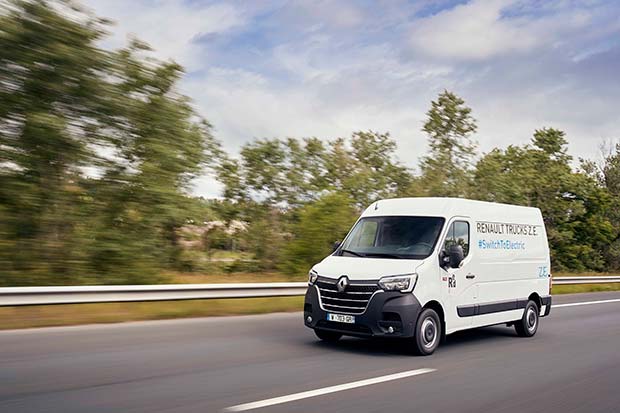Grahame Neagus, Head of LCV, Renault Trucks UK & Ireland: Every couple of years the current cohort of Fleet and Operations Managers ruminate on how the next generation of vehicles will affect the future of their fleets. In reality, not much has altered over the last few years but it looks like in 2019, we are on the cusp of a change.
 With the ever-increasing demand for environmentally- friendly vehicles, the introduction of more low emission zones and the development of new technology, electromobility is no longer just a ‘buzz’ word. Now it’s a term grounded in reality.
With the ever-increasing demand for environmentally- friendly vehicles, the introduction of more low emission zones and the development of new technology, electromobility is no longer just a ‘buzz’ word. Now it’s a term grounded in reality.
The switch to electric may seem daunting. Vehicle selection and price are only part of the story of introducing electric vehicles to an operational fleet. It’s important to ensure you fully understand the technology in order to make a well-informed decision. Experts who take a consultative approach to help guide you on the journey to electromobility can help.
Renault Trucks, for example, has been working with operators over the past ten years to prove the operational capability and commercial viability of fully electric vehicle technologies. Its latest generation of Z.E. 100% electric vehicles from 3.1 tonnes right up to 26 tonnes are already in operation with customers, proven performance with proven experts in the dealer network ready to help customers transition to electromobility.
By tapping into their expertise, with a roster of approved suppliers throughout the chain, you can be assured a smooth and simple transition to a greener future.
Before you start, let’s take a look at the most common concern for those considering the move to electromobility – charging.
There are a few key questions you’ll need to cover off first. What vehicles are you planning on running from each depot? Where will they be charged within your depot? Does the location impede or block access whilst vehicles are on charge? Do you need a landlord’s permission? Can you share charging resources with other businesses?
Once you have the answers, you will need to review the potential drain of charging electric vehicles on your power system. This will necessitate discussions with your local power supplier to understand the requirements at the depot. Measures can be taken to improve how cost effective the charging is, for example staggering the load of charging during the day and night, reducing the strain on the grid.
With the right people and partners in place, the transition to electric is seamless. Replacing older diesel vehicles with the latest generation of electric vehicles as they come up for renewal is the natural next step, whilst ensuring that as you increase the number of electric vehicle, you have all the necessary processes and systems in place to support your changing fleet.
In depots very soon, the sight of a diesel tank or bunker in the corner of the yard and a tanker coming once a week to refill it will be ancient history as we migrate into a cleaner, quieter and greener future.




Comments are closed.